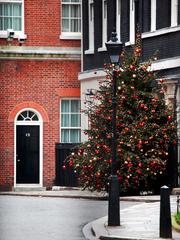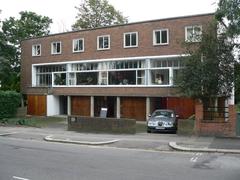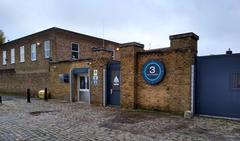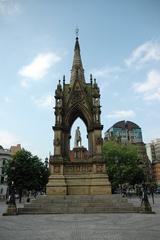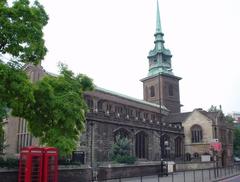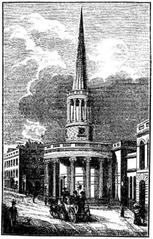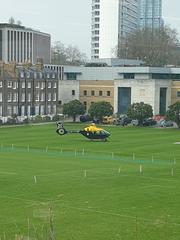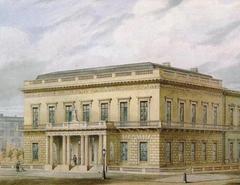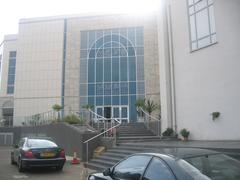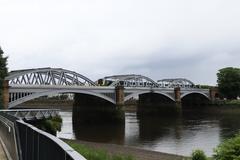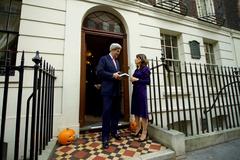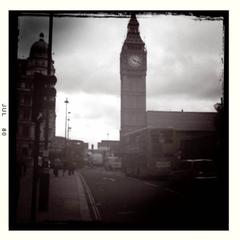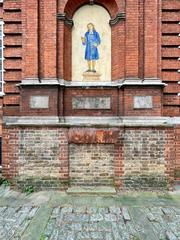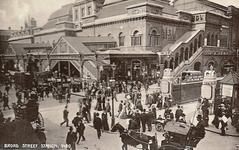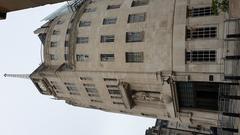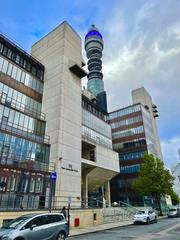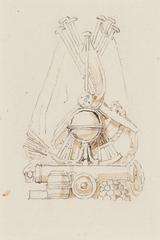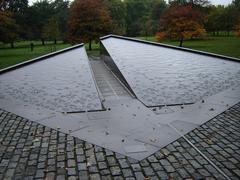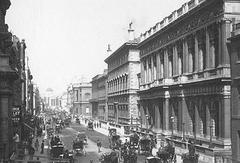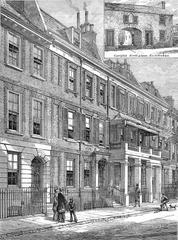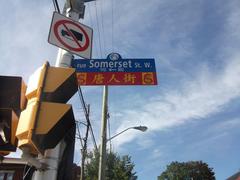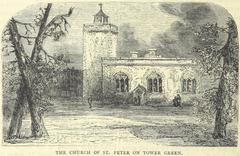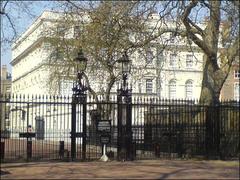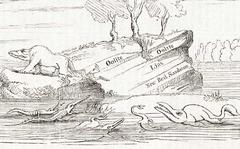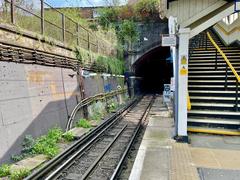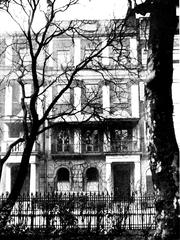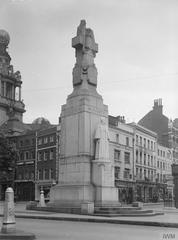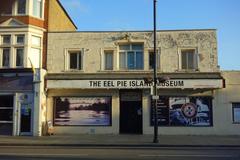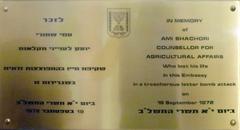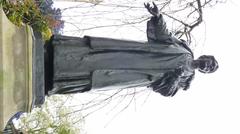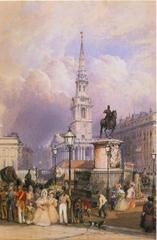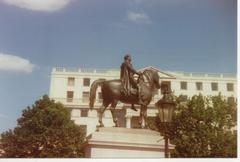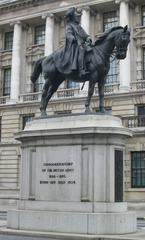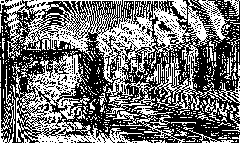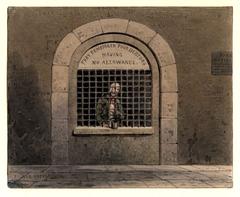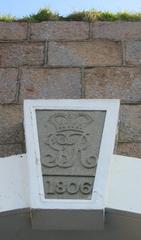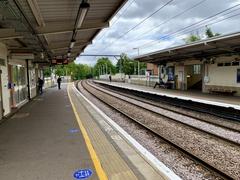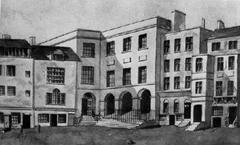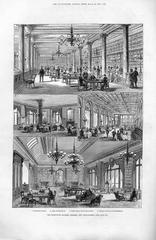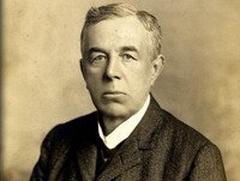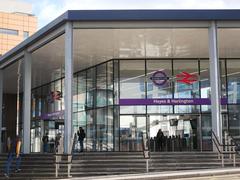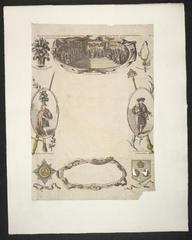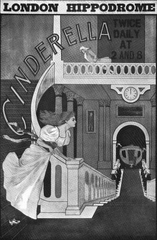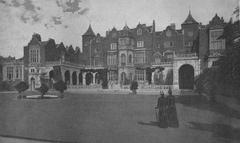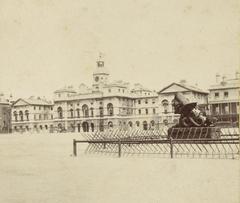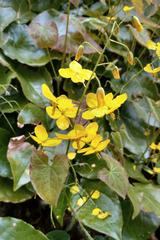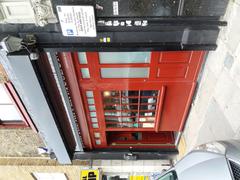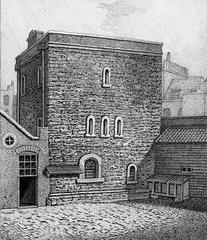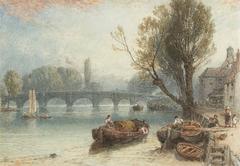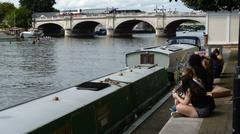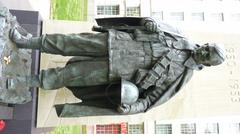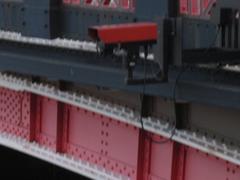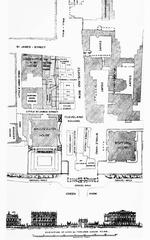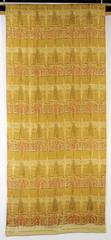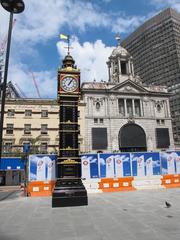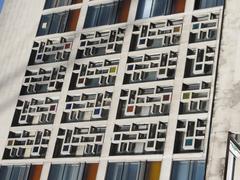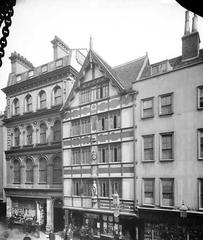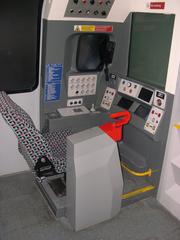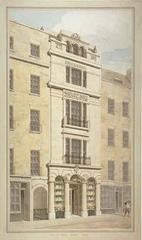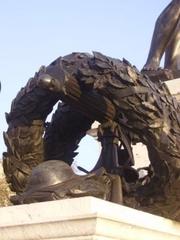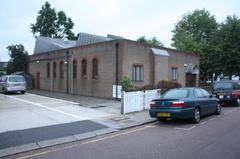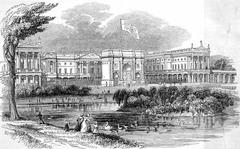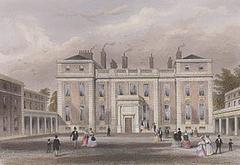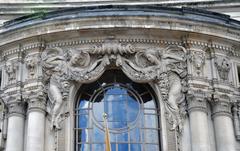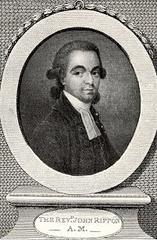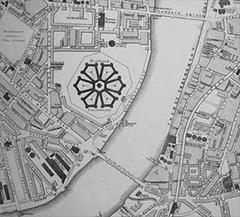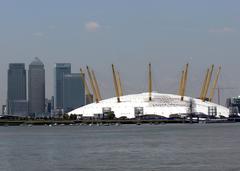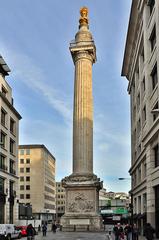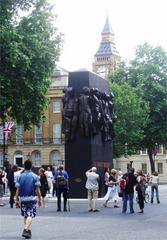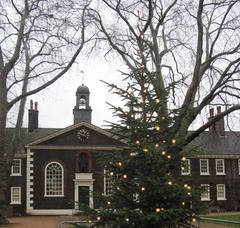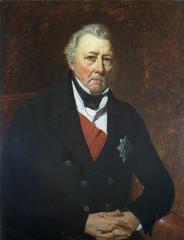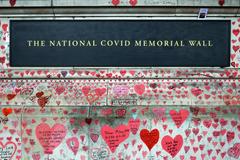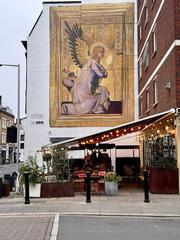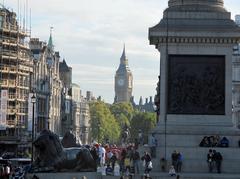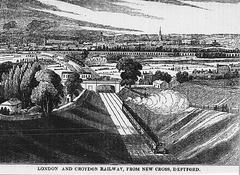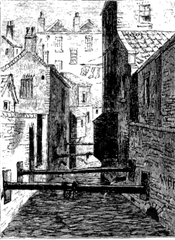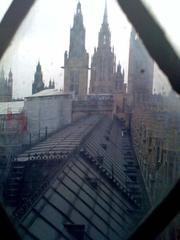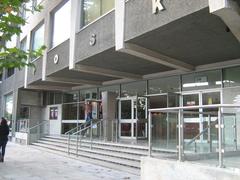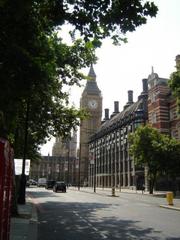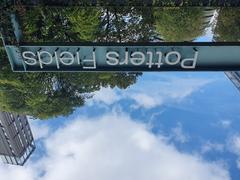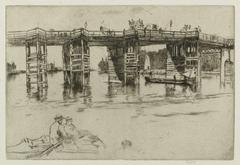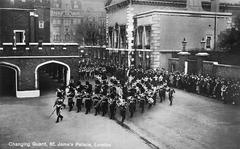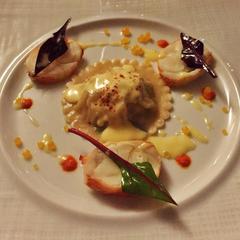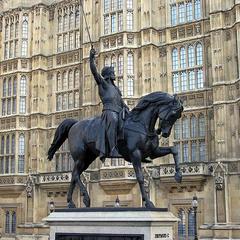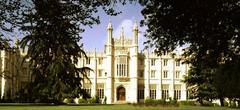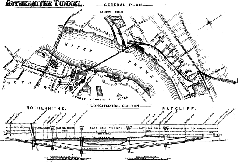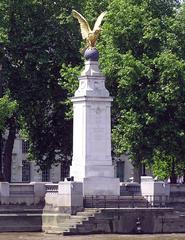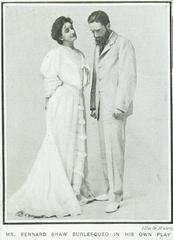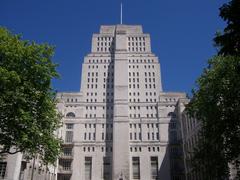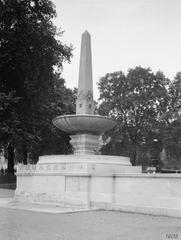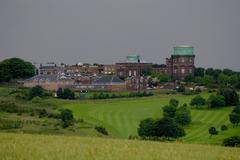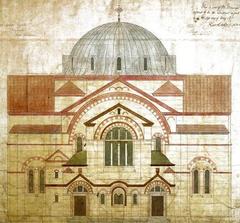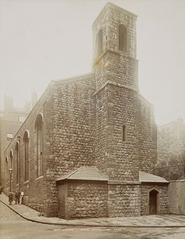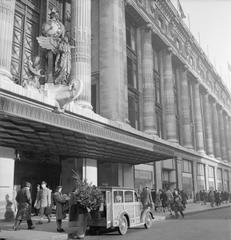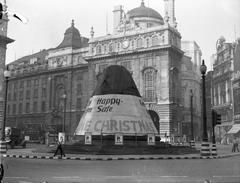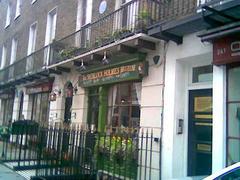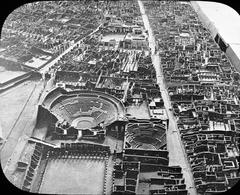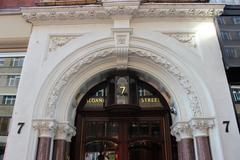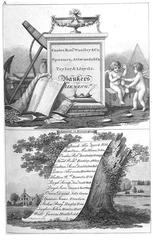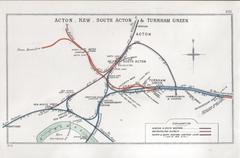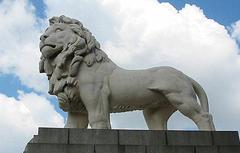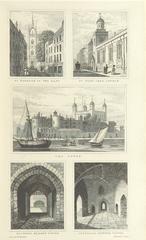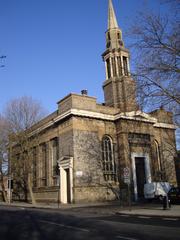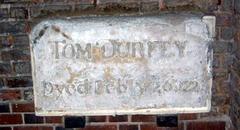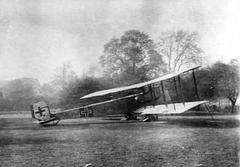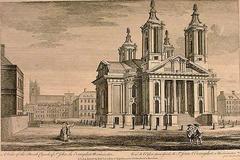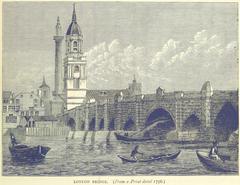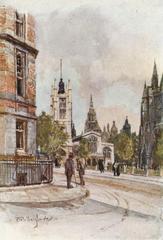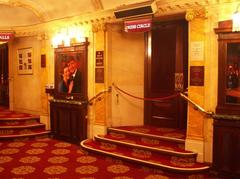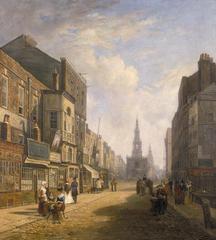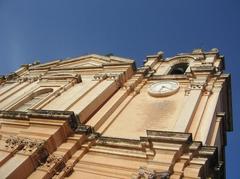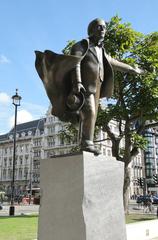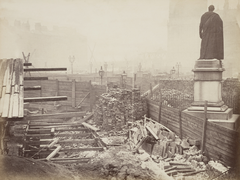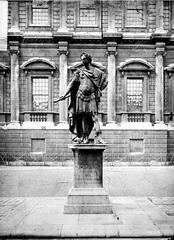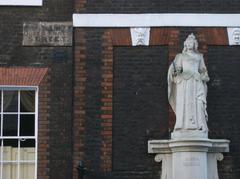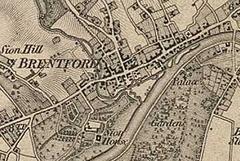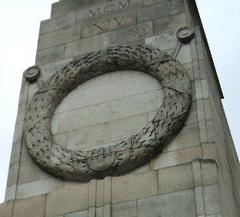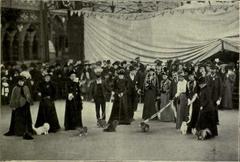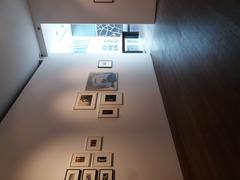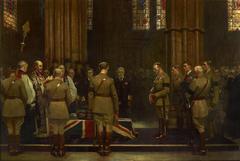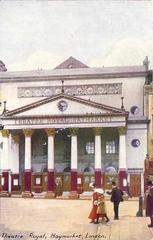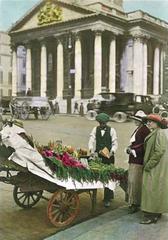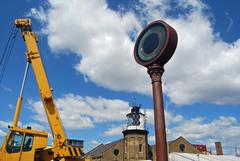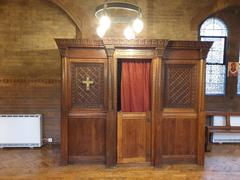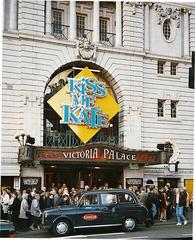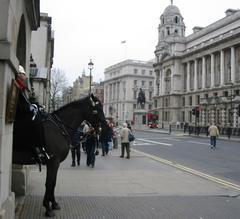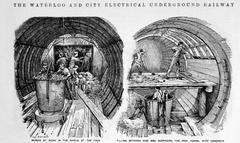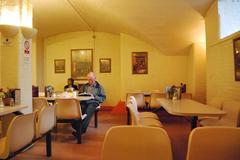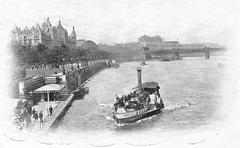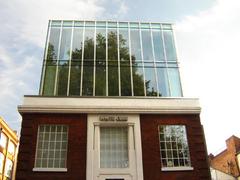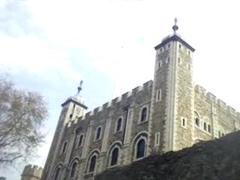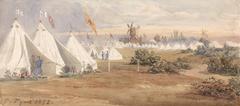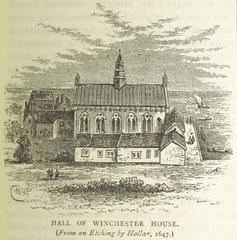Comprehensive Guide to Visiting Chelsea Bridge London
Date: 18/08/2024
Introduction
Chelsea Bridge, an iconic structure in London, stands as a testament to the city’s rich historical and architectural heritage. Initially conceived in the 1840s as part of a grand plan to redevelop the marshlands on the south bank of the Thames into what is now Battersea Park, Chelsea Bridge has undergone significant transformations over the years (Wikipedia). The first bridge, known as Victoria Bridge, was a suspension bridge built in 1858 and named in honor of Queen Victoria. Despite its architectural acclaim, the bridge faced public discontent due to tolls and safety concerns, leading to several modifications and its eventual renaming to Chelsea Bridge (Britain Express).
The current Chelsea Bridge, constructed in 1937, is a self-anchored suspension bridge, a pioneering design in Britain at the time. This bridge not only serves a functional purpose but also stands as a symbol of engineering prowess and resource availability within the British Empire (Historic Bridges). Adorned with ornamental designs, sophisticated lighting, and historical crests, Chelsea Bridge is not only a marvel of engineering but also a piece of art that enhances the beauty of London’s skyline.
Today, Chelsea Bridge is more than just a means of crossing the Thames; it is a cultural landmark, a historical artifact, and a popular destination for tourists and locals alike. Its proximity to attractions such as Battersea Park and Chelsea Physic Garden, coupled with its accessibility and modern amenities, make it a must-visit site in London. This comprehensive guide will provide you with all the essential information you need for visiting Chelsea Bridge, including its history, architectural features, visitor tips, and nearby attractions.
Table of Contents
- [Discover the Rich History and Visiting Tips for Chelsea Bridge in London](#discover-the-rich-history-and-visiting-tips-for-chelsea-bridge-in-londondiscover-the-rich-history-and-visiting-tips-for-chelsea-bridge-in-london)
- [Early Proposals and Construction](#early-proposals-and-constructionearly-proposals-and-construction)
- [Victoria Bridge: The First Chelsea Bridge](#victoria-bridge-the-first-chelsea-bridgevictoria-bridge-the-first-chelsea-bridge)
- [Archaeological Discoveries](#archaeological-discoveriesarchaeological-discoveries)
- [Safety Concerns and Renaming](#safety-concerns-and-renamingsafety-concerns-and-renaming)
- [The Second Chelsea Bridge](#the-second-chelsea-bridgethe-second-chelsea-bridge)
- [Design and Features](#design-and-featuresdesign-and-features)
- [Cultural Significance and Modern Use](#cultural-significance-and-modern-usecultural-significance-and-modern-use)
- [Visitor Tips](#visitor-tipsvisitor-tips)
- [How to Get to Chelsea Bridge](#how-to-get-to-chelsea-bridgehow-to-get-to-chelsea-bridge)
- [Best Times to Visit](#best-times-to-visitbest-times-to-visit)
- [Accessibility](#accessibilityaccessibility)
- [Nearby Attractions](#nearby-attractionsnearby-attractions)
- [Battersea Park](#battersea-parkbattersea-park)
- [Chelsea Physic Garden](#chelsea-physic-gardenchelsea-physic-garden)
- [FAQ](#faqfaq)
- [Exploring Chelsea Bridge: History, Architecture, and Visitor Information](#exploring-chelsea-bridge-history-architecture-and-visitor-informationexploring-chelsea-bridge-history-architecture-and-visitor-information)
- [Introduction](#introductionintroduction-1)
- [Architectural Features](#architectural-featuresarchitectural-features)
- [Historical Evolution](#historical-evolutionhistorical-evolution)
- [Design and Construction](#design-and-constructiondesign-and-construction)
- [Structural Elements](#structural-elementsstructural-elements)
- [Suspension System](#suspension-systemsuspension-system)
- [Towers and Cables](#towers-and-cablestowers-and-cables)
- [Aesthetic Features](#aesthetic-featuresaesthetic-features)
- [Decorative Elements](#decorative-elementsdecorative-elements)
- [Lighting](#lightinglighting)
- [Modern Enhancements](#modern-enhancementsmodern-enhancements)
- [Structural Reinforcements](#structural-reinforcementsstructural-reinforcements)
- [Footbridge Addition](#footbridge-additionfootbridge-addition)
- [Visitor Information](#visitor-informationvisitor-information)
- [Ticket Prices](#ticket-pricesticket-prices)
- [Visiting Hours](#visiting-hoursvisiting-hours)
- [Special Events](#special-eventsspecial-events)
- [Guided Tours](#guided-toursguided-tours)
- [Photographic Spots](#photographic-spotsphotographic-spots)
- [Travel Tips](#travel-tipstravel-tips)
- [How to Get There](#how-to-get-therehow-to-get-there)
- [Best Times to Visit](#best-times-to-visitbest-times-to-visit)
- [Nearby Attractions](#nearby-attractionsnearby-attractions-1)
- [Battersea Park](#battersea-parkbattersea-park-1)
- [Chelsea Embankment](#chelsea-embankmentchelsea-embankment)
- [Accessibility](#accessibilityaccessibility-1)
- [FAQ](#faqfaq-1)
- [Essential Visitor Tips for Chelsea Bridge, London: Best Times, Tickets, Nearby Attractions & More](#essential-visitor-tips-for-chelsea-bridge-london-best-times-tickets-nearby-attractions—moreessential-visitor-tips-for-chelsea-bridge-london-best-times-tickets-nearby-attractions-more)
- [Introduction](#introductionintroduction-2)
- [Best Time to Visit](#best-time-to-visitbest-time-to-visit)
- [Visiting Hours and Tickets](#visiting-hours-and-ticketsvisiting-hours-and-tickets)
- [Getting There](#getting-theregetting-there)
- [Nearby Attractions](#nearby-attractionsnearby-attractions-2)
- [Dining Options](#dining-optionsdining-options)
- [Safety Tips](#safety-tipssafety-tips)
- [Photography Tips](#photography-tipsphotography-tips)
- [Accessibility](#accessibilityaccessibility-2)
- [Special Events](#special-eventsspecial-events-1)
- [Shopping](#shoppingshopping)
- [Accommodation](#accommodationaccommodation)
- [Local Culture](#local-culturelocal-culture)
- [Weather Considerations](#weather-considerationsweather-considerations)
- [Health and Safety](#health-and-safetyhealth-and-safety)
- [Local Etiquette](#local-etiquettelocal-etiquette)
- [Useful Apps](#useful-appsuseful-apps)
- [FAQ](#faqfaq-2)
Discover the Rich History and Visiting Tips for Chelsea Bridge in London
Early Proposals and Construction
The idea for the first Chelsea Bridge emerged in the 1840s as part of a significant development plan for the marshlands on the south bank of the Thames. The goal was to transform these marshlands into what would become Battersea Park, providing a green space for the rapidly growing population of London. The bridge was intended to offer convenient access from the densely populated north bank to the new park. Although the bridge was built and operated by the government, tolls were initially charged to recoup the construction costs (Wikipedia).
Victoria Bridge: The First Chelsea Bridge
The first Chelsea Bridge, initially named Victoria Bridge in honor of Queen Victoria, was a suspension bridge designed by architect Thomas Page. Construction began in 1851 and was completed in 1858. The bridge was officially opened by Queen Victoria on March 31, 1858, and opened to the public on April 3, 1858 (Britain Express). Despite its architectural acclaim, the bridge faced public discontent due to the tolls, especially since the newly opened Battersea Park was free to enter. This led to Parliament making the bridge toll-free on Sundays (Wikipedia).
Archaeological Discoveries
During the construction of the first bridge, workmen unearthed a significant number of Roman and Celtic relics, including skeletons and weapons. The most notable find was the Battersea Shield, a stunning bronze shield decorated with 27 enamel studs. This artifact is now displayed in the Museum of London (Britain Express).
Safety Concerns and Renaming
Shortly after its opening, concerns about the bridge’s safety arose. An inspection in 1861 by engineers John Hawkshaw and Edwin Clark led to the addition of an extra support chain on each side. Despite these reinforcements, a weight limit of 5 tons was imposed. To avoid any potential association with a collapse, the bridge was renamed from Victoria Bridge to Chelsea Bridge (Wikipedia).
The Second Chelsea Bridge
The current Chelsea Bridge, a self-anchored suspension bridge, was constructed in 1937. This new bridge was the first of its kind in Britain and was built entirely with materials sourced from within the British Empire. The bridge was opened on May 6, 1937, by the Prime Minister of Canada, W.L. Mackenzie King, as the construction utilized Douglas fir from British Columbia (Historic Bridges).
Design and Features
The new bridge is adorned with five sets of lampposts, decorated with golden galleons, and smaller bulbs fixed into the swooping metal supports. The four tall turrets at either end of the bridge feature heraldic designs, including crests of Middlesex and other counties around London, and a series of doves holding olive branches (Historic Bridges).
Cultural Significance and Modern Use
During the early 1950s, Chelsea Bridge became popular with motorcyclists who staged regular races across it. One such meeting in 1970 resulted in violence, leading to the death of one man and the imprisonment of 20 others (Wikipedia). Today, the bridge is floodlit from below during the hours of darkness, with the towers and cables illuminated by 936 feet (285 meters) of light-emitting diodes. In 2008, Chelsea Bridge achieved Grade II listed status (Wikipedia).
Visitor Tips
How to Get to Chelsea Bridge
Chelsea Bridge is conveniently located in west London, connecting Chelsea on the north bank to Battersea on the south bank. The bridge is split between the City of Westminster, the London Borough of Wandsworth, and the Royal Borough of Kensington and Chelsea. Visitors can reach the bridge via various public transportation options, including buses and the nearest tube stations, Sloane Square and Battersea Park (Wikipedia).
Best Times to Visit
The best times to visit Chelsea Bridge are early mornings or late evenings when the bridge is beautifully illuminated and less crowded. The picturesque stroll along the Chelsea Embankment offers stunning views of the bridge and the Battersea Power Station (Secret LDN).
Accessibility
Chelsea Bridge is wheelchair accessible, with smooth pathways and ramps available for differently-abled visitors.
Nearby Attractions
Battersea Park
Crossing the iconic Albert Bridge from Chelsea to Battersea opens up a wealth of new adventures. Battersea Park, located directly opposite Chelsea, offers an expansive green oasis on the Thames with lush gardens, tranquil lakes, sports facilities, and even its own zoo (Secret LDN).
Chelsea Physic Garden
Additionally, the Chelsea Physic Garden, founded in 1673, is London’s oldest botanical garden and one of the most respected in Europe (Secret LDN).
FAQ
What are the best times to visit Chelsea Bridge? The best times to visit are early mornings or late evenings when the bridge is less crowded and beautifully illuminated.
Is there an entrance fee for Chelsea Bridge? No, Chelsea Bridge is free to visit.
Are there guided tours available at Chelsea Bridge? Currently, there are no regular guided tours specifically for Chelsea Bridge, but guided walking tours of the surrounding areas often include the bridge.
Exploring Chelsea Bridge: History, Architecture, and Visitor Information
Introduction
Chelsea Bridge is an iconic landmark in London, celebrated for its historical significance, architectural elegance, and contemporary enhancements. This article delves into the bridge’s rich history, structural features, and essential visitor information to help you make the most of your visit.
Architectural Features
Historical Evolution
Chelsea Bridge has undergone significant transformations since its inception. The original bridge, proposed in the 1840s, was a cast iron suspension bridge designed by engineer Thomas Page. It was intended to facilitate access between Chelsea on the north bank and the newly developed Battersea Park on the south bank (Wikiwand). The initial structure, known as Victoria Bridge, opened in 1858 but was later renamed Chelsea Bridge to avoid any royal association with a potential collapse due to its structural issues.
Design and Construction
The current Chelsea Bridge, completed in 1937, is a self-anchored suspension bridge, a pioneering design in Britain at the time. This design choice was significant as it allowed the bridge to be constructed entirely with materials sourced from within the British Empire, showcasing the engineering prowess and resource availability of the era (Wikiwand). The bridge’s construction involved reinforced concrete and steel, ensuring greater durability and capacity to handle increased traffic volumes, including automobiles.
Structural Elements
Suspension System
The suspension system of Chelsea Bridge is a key architectural feature. The bridge employs a self-anchored suspension design, where the main cables are anchored to the bridge deck itself rather than to the ground. This innovative approach reduces the need for extensive anchorage systems and allows for a more streamlined construction process. The main cables are supported by two towers, which are integral to the bridge’s structural integrity and aesthetic appeal.
Towers and Cables
The towers of Chelsea Bridge are notable for their elegant design and functional importance. They are constructed from steel and concrete, providing the necessary support for the suspension cables. The cables themselves are made of high-strength steel, capable of bearing significant loads. During nighttime, the bridge is floodlit from below, with the towers and cables illuminated by 936 feet (285 meters) of light-emitting diodes (LEDs), creating a visually stunning effect (Wikiwand).
Aesthetic Features
Decorative Elements
Chelsea Bridge is not only a functional structure but also an aesthetically pleasing one. The bridge features detailed ornamental designs, particularly on the towers and the suspension cables. These decorative elements reflect the architectural style of the 19th century, blending functionality with artistic expression. The bridge’s cast iron components, including the arches and railings, are adorned with intricate patterns, adding to its visual appeal.
Lighting
One of the most striking aesthetic features of Chelsea Bridge is its lighting. The bridge is equipped with a sophisticated lighting system that enhances its appearance during the hours of darkness. The LED lights used to illuminate the towers and cables create a mesmerizing effect, making the bridge a prominent landmark in London’s nighttime skyline. This lighting not only serves an aesthetic purpose but also improves visibility and safety for pedestrians and motorists.
Modern Enhancements
Structural Reinforcements
Over the years, Chelsea Bridge has undergone several enhancements to meet modern standards and accommodate increasing traffic volumes. The bridge’s structure has been reinforced with additional steel and concrete elements to ensure its stability and longevity. These reinforcements have been carefully integrated into the original design, preserving the bridge’s historical and architectural integrity.
Footbridge Addition
In 2004, a footbridge was added beneath the southern span of Chelsea Bridge, carrying the Thames Path under the bridge. This addition provides a safe and convenient passage for pedestrians and cyclists, enhancing the bridge’s functionality and accessibility. The footbridge is designed to blend seamlessly with the existing structure, maintaining the overall aesthetic harmony of the bridge (Wikiwand).
Visitor Information
Ticket Prices
Chelsea Bridge is freely accessible to the public. There are no ticket prices for visiting the bridge itself. Special events or guided tours may have associated costs, which can be found on the respective event or tour websites.
Visiting Hours
Chelsea Bridge is open to visitors 24 hours a day, seven days a week. However, the best times to visit are during daylight hours for scenic views and at night for the stunning LED lighting display.
Special Events
Throughout the year, Chelsea Bridge hosts several special events, including historical tours, lighting ceremonies, and community gatherings. Check local event listings or the official Chelsea Bridge website for upcoming events and details.
Guided Tours
Guided tours of Chelsea Bridge are available through various tour operators in London. These tours often include detailed historical accounts, architectural insights, and access to areas not typically open to the public. Booking in advance is recommended.
Photographic Spots
Chelsea Bridge offers numerous photographic opportunities. Popular spots include the viewpoints from Battersea Park, the Chelsea Embankment, and directly on the bridge itself. Nighttime photography is particularly rewarding due to the bridge’s impressive lighting.
Travel Tips
How to Get There
Chelsea Bridge is easily accessible by public transportation. The nearest train stations are Battersea Park and Queenstown Road, both within a short walking distance. Several bus routes also serve the area, and there are ample cycling paths for those preferring to bike.
Best Times to Visit
For the best experience, visit Chelsea Bridge during the spring and summer months when the weather is pleasant, and the surrounding parks are in full bloom. Early mornings and late evenings offer the most serene atmosphere and the best lighting for photography.
Nearby Attractions
Battersea Park
Located just south of Chelsea Bridge, Battersea Park is a beautiful green space featuring gardens, walking paths, and recreational facilities. It’s an ideal spot for a leisurely stroll or a picnic.
Chelsea Embankment
The Chelsea Embankment, located on the north bank of the Thames, offers a scenic promenade lined with trees and historic buildings. It’s a great place for a walk or bike ride, with plenty of benches to enjoy the view.
Accessibility
Chelsea Bridge is fully accessible to pedestrians, cyclists, and motorists. The addition of the footbridge beneath the southern span ensures a safe passage for those on foot or bike. Accessibility features are designed to accommodate visitors of all abilities.
FAQ
Q: What are the visiting hours for Chelsea Bridge? A: Chelsea Bridge is open 24 hours a day, seven days a week.
Q: Is Chelsea Bridge accessible for pedestrians and cyclists? A: Yes, Chelsea Bridge is fully accessible for pedestrians and cyclists.
Q: Are there any guided tours available? A: Yes, guided tours are available through various tour operators in London. Booking in advance is recommended.
Q: What are the best times to visit Chelsea Bridge? A: The best times to visit are during daylight hours for scenic views and at night for the stunning LED lighting display.
Essential Visitor Tips for Chelsea Bridge, London: Best Times, Tickets, Nearby Attractions & More
Introduction
Chelsea Bridge is an iconic landmark in London, offering breathtaking views and a gateway to some of the city’s most vibrant neighborhoods. This guide provides essential tips for visitingChelsea Bridge, including the best times to visit, ticket information, nearby attractions, and more. Whether you’re a history buff, art lover, or just looking to enjoy the scenic views, this guide has you covered.
Best Time to Visit
The optimal time to visit Chelsea Bridge is from May to August. During these months, London experiences warm, dry weather, and the city is bustling with events and festivals. Temperatures range from 50°F to 73°F, making it ideal for outdoor activities and sightseeing (Travellers Worldwide). If you prefer fewer crowds, consider visiting in May or June. However, if you want to experience the warmest weather, July and August are your best bets.
Visiting Hours and Tickets
Chelsea Bridge is open to the public 24/7, and there is no admission fee. However, nearby attractions such as Battersea Park and the Chelsea Barracks estate may have specific opening hours and ticket prices. Check their respective websites for the most up-to-date information.
Getting There
Chelsea Bridge is conveniently located and accessible via multiple modes of transportation. The nearest Tube stations are Sloane Square and Battersea Power Station, both of which are within walking distance. For those preferring to travel by bus, several routes, including the 137 and 452, stop near the bridge. If you’re driving, parking can be challenging, but there are some parking facilities in the nearby areas of Battersea and Chelsea.
Nearby Attractions
Chelsea Bridge is situated in a vibrant area with numerous attractions nearby. Just a short walk away is Battersea Park, a 200-acre green space perfect for a leisurely stroll or a picnic. The park also features a children’s zoo, boating lake, and the iconic Peace Pagoda. For art enthusiasts, the Chelsea Barracks estate offers a rotating display of outdoor sculptures, including works by renowned artists like Dale Chihuly (London Art Roundup).
Dining Options
There are plenty of dining options around Chelsea Bridge to suit all tastes and budgets. For a luxurious experience, visit the nearby Chelsea Barracks, which houses several high-end restaurants. If you prefer something more casual, the area around Battersea Park offers a variety of cafes and eateries. For a quintessentially British experience, consider having afternoon tea at one of the local tea rooms.
Safety Tips
London is generally a safe city, but it’s always wise to take precautions. Keep an eye on your belongings, especially in crowded areas. If you’re visiting Chelsea Bridge at night, stick to well-lit areas and avoid walking alone. The local police are friendly and approachable, so don’t hesitate to ask for assistance if needed.
Photography Tips
Chelsea Bridge offers stunning views, especially at sunrise and sunset. For the best shots, consider visiting early in the morning or late in the evening when the light is soft and golden. The bridge itself is an architectural marvel, so don’t forget to capture its intricate details. If you’re into night photography, the bridge is beautifully illuminated after dark, providing excellent opportunities for long-exposure shots.
Accessibility
Chelsea Bridge is accessible to everyone, including those with mobility issues. The bridge has wide walkways and ramps, making it easy for wheelchair users and those with strollers to navigate. Nearby attractions like Battersea Park also offer accessible paths and facilities, ensuring a comfortable visit for all.
Special Events
Throughout the year, Chelsea Bridge and its surrounding areas host various events and festivals. One of the highlights is the Chelsea Flower Show, held annually in May, which attracts gardening enthusiasts from around the world (Travellers Worldwide). Another notable event is the Kensington + Chelsea Art Trail, which runs from June to August and features installations by contemporary artists (London Art Roundup).
Shopping
For those who love shopping, the areas around Chelsea Bridge offer a mix of high-end boutiques and local markets. King’s Road, a short distance away, is famous for its designer stores and trendy shops. If you prefer something more eclectic, visit the nearby Chelsea Farmers’ Market, where you can find everything from fresh produce to unique crafts.
Accommodation
There are numerous accommodation options near Chelsea Bridge, ranging from luxury hotels to budget-friendly hostels. For a lavish stay, consider booking a room at one of the upscale hotels in Chelsea or Battersea. If you’re traveling on a budget, there are several hostels and budget hotels in the area that offer comfortable and affordable lodging.
Local Culture
Chelsea Bridge is located in a culturally rich area, known for its artistic and historical significance. The nearby Chelsea Barracks estate often hosts public exhibitions and cultural events, providing a glimpse into the local art scene (London Art Roundup). Additionally, the Chelsea area is home to several museums and galleries, including the Saatchi Gallery, which showcases contemporary art.
Weather Considerations
London’s weather can be unpredictable, so it’s always a good idea to check the forecast before heading out. During the summer months, temperatures are generally pleasant, but it’s wise to carry an umbrella or raincoat just in case. In the winter, temperatures can drop significantly, so dress warmly and consider indoor activities if the weather is particularly harsh (Travellers Worldwide).
Health and Safety
Ensure you have travel insurance that covers health emergencies. London has excellent healthcare facilities, but it’s always better to be prepared. If you have any medical conditions, carry necessary medications and a copy of your prescriptions. In case of emergencies, dial 999 for immediate assistance.
Local Etiquette
Londoners are generally polite and helpful, but it’s always good to be aware of local customs. When using public transport, remember to stand on the right side of escalators to allow others to pass. Tipping is customary in restaurants, usually around 10-15% of the bill. If you’re visiting during a local event or festival, be respectful of the traditions and practices.
Useful Apps
Several apps can enhance your visit to Chelsea Bridge and the surrounding areas. Citymapper is excellent for navigating public transport, while Time Out London provides information on local events and attractions. For dining, OpenTable allows you to make reservations at nearby restaurants. If you’re interested in exploring the local art scene, the London Art Roundup app offers updates on exhibitions and outdoor sculpture trails (London Art Roundup).
FAQ
Q: What are the opening hours for Chelsea Bridge?
A: Chelsea Bridge is open 24/7 and is free to visit.
Q: Are there any guided tours available?
A: While there are no specific guided tours for Chelsea Bridge, several city tours include it as part of their itinerary.
Q: What is the best time for photography at Chelsea Bridge?
A: The best times for photography are at sunrise and sunset when the light is soft and golden.
Conclusion
By following these tips, you can ensure a memorable and enjoyable visit to Chelsea Bridge and its surrounding areas. Whether you’re interested in history, art, or simply soaking in the scenic views, there’s something for everyone in this vibrant part of London. Don’t forget to download useful apps, check out nearby attractions, and enjoy the local culture. Happy exploring!
Conclusion
Chelsea Bridge is a shining example of London’s ability to blend historical significance with modern-day utility and aesthetic appeal. From its early days as Victoria Bridge in the 19th century to its current status as a Grade II listed structure, Chelsea Bridge has played a vital role in connecting communities and enhancing the urban landscape of London (Wikipedia). Its architectural elegance, historical importance, and cultural significance make it a landmark worth exploring for both history enthusiasts and casual visitors.
Whether you are drawn to Chelsea Bridge for its stunning views, historical context, or its beautifully illuminated structure at night, the bridge offers something for everyone. With its easy accessibility, proximity to notable attractions like Battersea Park and the Chelsea Physic Garden, and a variety of dining and shopping options, visiting Chelsea Bridge promises to be a memorable experience. As you plan your visit, keep in mind the detailed tips and information provided in this guide to make the most of your time at this iconic London landmark. For more travel tips and updates on London’s top attractions, be sure to download our mobile app Audiala and follow us on social media.
References
- Wikipedia, 2024, Chelsea Bridge
- Britain Express, 2024, Chelsea Bridge
- Historic Bridges, 2024, Chelsea Bridge
- Wikiwand, 2024, Chelsea Bridge
- Secret LDN, 2024, Things to Do in Chelsea
- Travellers Worldwide, 2024, Best Time to Visit London
- London Art Roundup, 2024, Outdoor Sculpture Trails 2024

